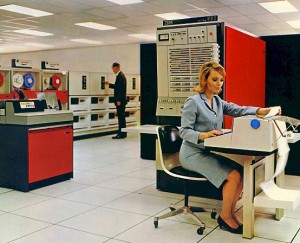What’s New at Kinetic: Building Smart in 2026
At Kinetic, we believe the future of Business Process Management isn’t bigger—it’s smarter.
While change is a constant in IT, there’s no question that the technology developments of the past couple of years and what’s in store for the coming year are…different. The confluence of cloud...

While change is a constant in IT, there’s no question that the technology developments of the past couple of years and what’s in store for the coming year are…different. The confluence of cloud computing, BYOD, consumerization, shadow IT, low-code platforms, the Internet of Things (IoT), and big data, among other trends, is creating challenges that are bigger, faster, and more disruptive than ever before.

In IT Leadership 2.0: Transform Yourself or Fade Away on CIO Insight, Frank Wander writes:
“A giant wave is crashing over IT as we know it. Our industry is one where waves regularly come and go, each one pushing something we held precious into the past. We have come to understand that technologies have a limited life span. It is an accepted notion in our industry. But this current wave is different—it is a tsunami, and IT leaders are in danger of being swept away.”
As noted here previously, today’s generational change in technology is challenging CIOs and IT groups to adapt on several fronts simultaneously. And many of Wander’s points are spot-on: much of what constitutes “corporate business infrastructure is already available in the cloud”; the skills required in IT are evolving; and talent management will be critical in addressing these rapidly evolving challenges.
CIOs will need to adapt. But they don’t need to panic. And, most importantly, they need to understand what needs to change (and what doesn’t). They need to craft and articulate for enterprise leaders an aligned IT-business strategy that takes an evolutionary approach to technology trends, rather than charging down a revolutionary, disruptive, and expensive “rip and replace” path.
Evolving organizational IT infrastructure from on-premises to a hybrid cloud environment is one key aspect of adaptation and already well underway in most enterprises. But the contention that “The legacy infrastructures built at a great cost have already gone from being a source of competitive advantage to being a burdensome disadvantage. Many companies are weighed down by these costly, inflexible legacy infrastructures that make change both slow and expensive” is questionable.
To take but one example, consider the mainframe. These big iron “dinosaurs” are well on their way to being made extinct by cloud infrastructure, right? Not exactly. Consider:
Rather than eliminating the mainframe, cloud computing has forced the technology to evolve. As noted in InformationWeek, mainframes are now positioned as “a suitable platform on which to run the enterprise private cloud.” The article also notes, “An IBM mainframe can be subdivided to run Linux virtual machines, in something of the same manner that Amazon Web Services or the Rackspace cloud runs virtual machines. But unlike an AWS host, a single mainframe runs 6,000 VMs at a time.”
Certainly, some organizations have migrated core management and control applications off of mainframes to other servers, and others will continue to do so. But a significant portion of the data and applications currently residing on mainframes will stay there for the foreseeable future, for resiliency and security reasons.
The larger point is that revolutionary, disruptive change isn’t always necessary or the best approach to meeting changing business needs and user expectations. Applying modern systems of engagement atop legacy systems of record enables business process owners to meet new requirements and provide users with intuitive web / mobile interfaces, while readying themselves for inevitable change.
Even when a large-scale migration or new software implementation is chosen as the best way forward, flexible workflow automation tools that utilize common, open communication protocols (API’s, Web Services, SOAP, REST, etc.) can be used in conjunction with in-place legacy applications to solve business problems quickly–and being designed to work with “what you have today as well as whatever you have tomorrow,” these tools can continue to be used with newer software with only minor adjustments.
Further, by utilizing tools for the portal / presentation and workflow mapping logic layers that are separate from the underlying legacy data sources and applications, organizations can quickly build, test, optimize, deploy, and clone business processes without the expense and risk of modifying core legacy application code. They can also incorporate agile development methods to build small applications that provide “quick wins,” and then extend the functionality of those applications (such as a business service catalog) incrementally over time.
Today’s rapid pace and magnitude of technology change is forcing CIOs and IT professionals to adapt. But an evolutionary rather than revolutionary approach remains the best strategy. Adapting to cloud computing, consumerization, and other trends doesn’t require wholesale replacement of legacy systems, but rather a carefully planned strategy to selectively migrate from older systems, implement new technology, and use tools that leverage existing investments in responsive, innovative, customer-friendly, and agile ways.
Next Steps

At Kinetic, we believe the future of Business Process Management isn’t bigger—it’s smarter.

IT support automation uses software workflows, rule engines, AI/ML, and integrations to automate...

Business process reimagined is the strategic renewal of how work gets done by combining modern digital...